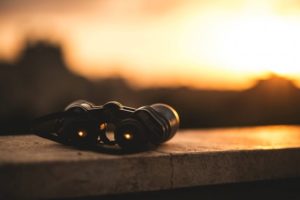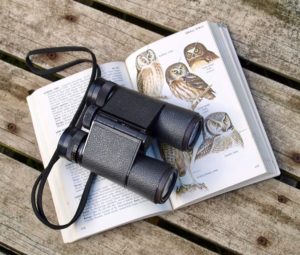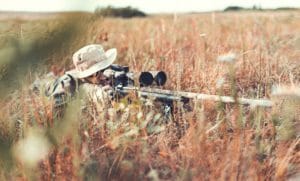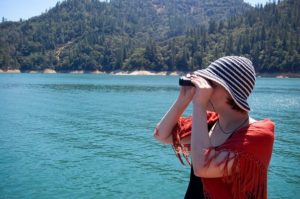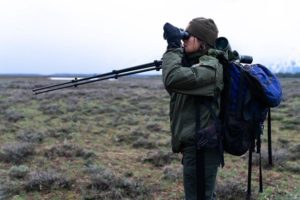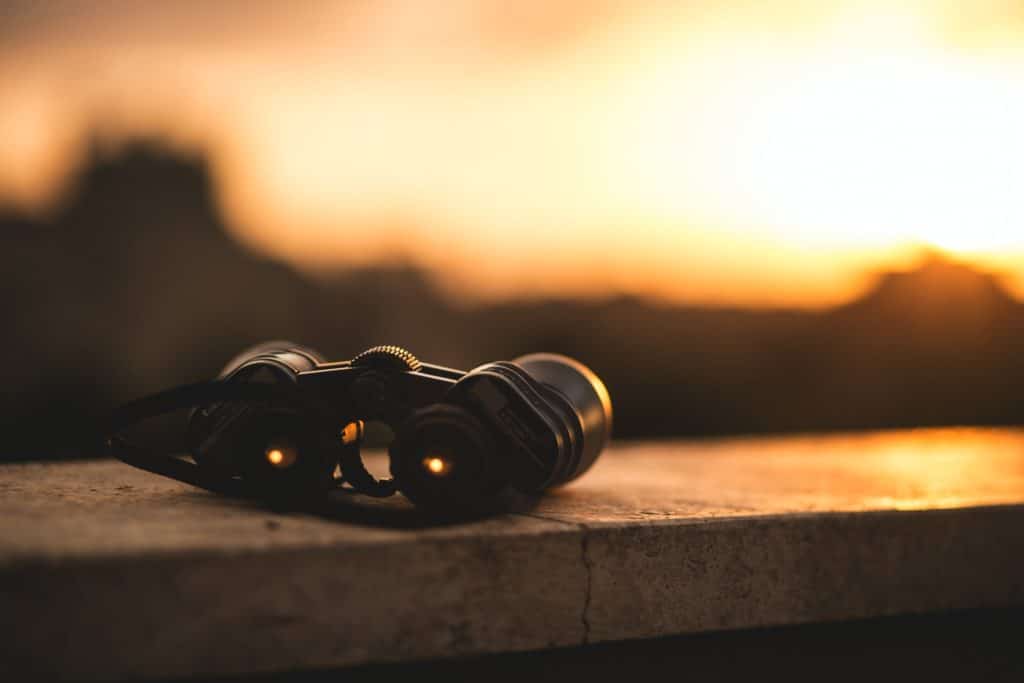The higher the price, the higher the quality isn’t always the case. While some people pay hundreds or even thousands of dollars for high-performing binoculars, there are definitely alternatives within a more budget-friendly price range on the market that give you solid images.
But how do you choose the best low cost binoculars? In this article, we’ll give you a buying guide informing you what to look for in your outdoor optics, as well as present our top 5 picks for the best budget binoculars. These are:
- Byakov Binoculars Best Binoculars Under 50 Dollars
- Adasion 12x42 Binoculars For Adults Best Binoculars Under 100 Dollars
- Vortex Optics Crossfire HD Best Binoculars Under 200 Dollars
- Steiner Marine 7x50 Best Binoculars Under 300 Dollars
- Vortex Optics Viper HD Best Binoculars Under 500 Dollars
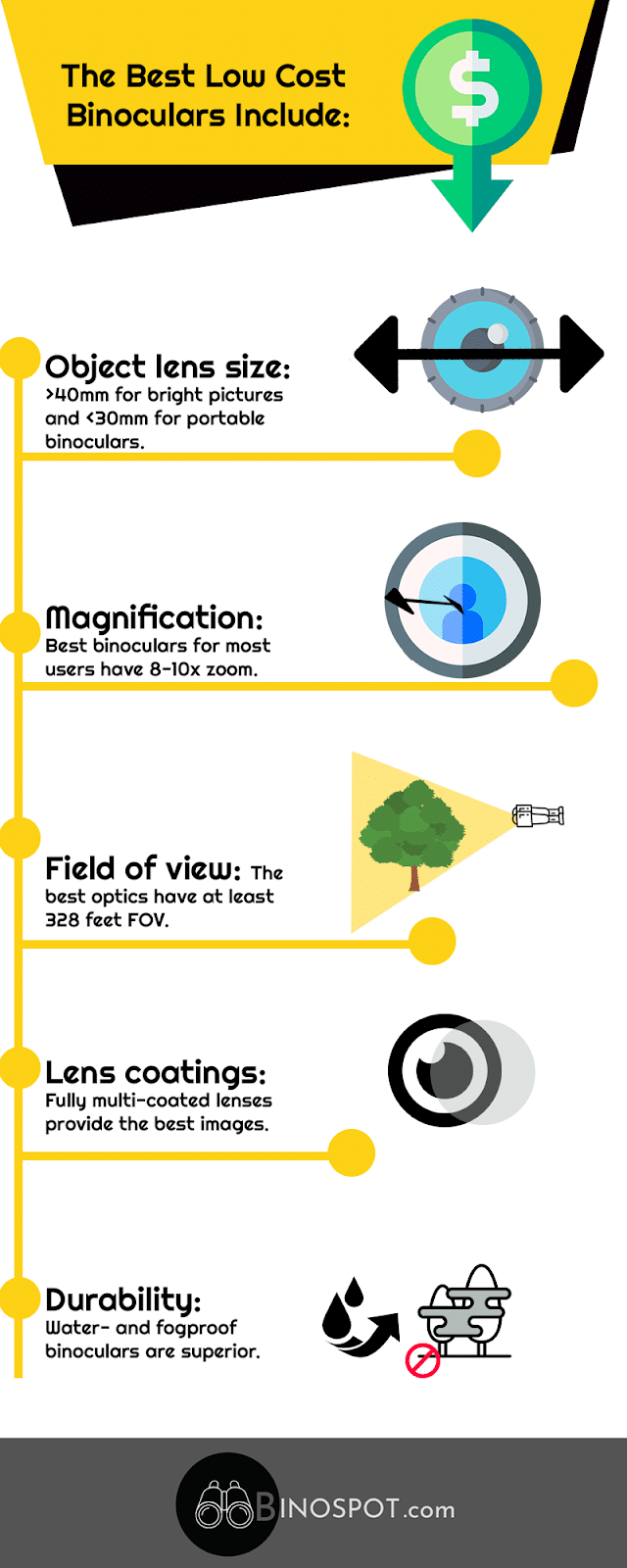
What To Look For In the Best Budget Binoculars
While a cheap price tag is preferable, you want to make sure that your pair of binoculars has a decent performance as well. What’s the use of buying a pair if you can barely see anything through them? Consider the following:
Object Lens Size
Object lens size is the first thing you want to think about when picking out your binoculars. The object lens size will determine the brightness of your images since the larger the lens, the more light it can capture. But the trade-off is that larger lenses aren’t as portable and lightweight.
- Compact: Compact binoculars have an objective lens diameter smaller than 30mm, making them portable and lightweight. Great to hold for extended periods and a good fit for backpackers.
- Mid: Objective lenses between 30-40mm give brighter images than compact ones and are smaller and more portable than full-sized binoculars. A good compromise between image quality and portability suitable for birdwatchers.
- Full: Has an objective lens larger than 40mm and gives the brightest images, but are also heavy and not very portable. Works great for hunters or search and rescue users that stay still.
Magnification
The second thing to look at is how much you can zoom with your binoculars. Outdoor optics with high magnification, typically 15x zoom, and more will let you observe objects at a further distance. If you want to stargaze or use your pair of binoculars at sea, be on the lookout for these.
Using binoculars to look at objects far away requires stable hands unless you want a blurry image. This isn’t much of an issue for still use, but for birdwatchers, sailors, or others who wish to move while using their optics, too high magnification isn’t ideal. The best tradeoff for most users in terms of clear images and magnification is, therefore, binoculars with 8x-10x zoom, such as the Vortex Optics Viper HD.
Refresh Rate
The refresh rate refers to how many frames your optics capture within one second which also affects how stable your image will be. The best pair of binoculars for those observing moving targets such as hunters have a refresh rate between 50-60Hz. Lower rates mean that the image might get choppy.
Field of View
Another thing that those observing moving objects such as wildlife should consider is the field of view (FOV). You can track animals easier with a wide FOV since you won’t have to move as much, which could otherwise scare a shy deer away.
Keep in mind that magnification affects your FOV negatively, and the higher you zoom in, the narrower field of view (and the other way around).
Your binocular’s field of view is determined by the width of the area you can see 1000 yards away from where you’re standing. If you’re a hunter or want to use your outdoor optics for sports-watching, go for binoculars with a field of view over 328 feet (100 m). On our list, the budget binoculars with the widest FOV are the .
Prism Configurations
What prism configuration your binoculars have doesn’t affect their image quality, only their size. Most pair of binoculars have one of two configurations:
- Porro prism: An older version that isn’t very sleek and can make the binoculars look bulky. It’s often cheaper, however, which is why binoculars with Porro prism might be a good choice for bargain hunters for whom portability isn’t that important.
- Roof prism: Gives a sleeker look to the binoculars but is more expensive than those using a Porro prism. The Vortex Optics Crossfire HD and the Vortex Optics Viper HD use a roof prism.
Eye Relief
Eye relief is essential, particularly for eyeglass wearers. Eye relief is the distance between your eyes and the binoculars’ lenses, and the stated specification notes the maximum value you can adjust the eye relief up to. For those who wear glasses, the eye relief should be at least 11mm.
For those who wear thick glasses, an 16mm eye relief or more is recommended. On our list, the binoculars providing the most eye relief are the Steiner Marine 7x50.
Lens Coatings
Binoculars provide images from light reflected through its lenses. However, this light refracts multiple times before it reaches your eyes. Every time the light reflects, the lenses lose some of it, negatively affecting the image quality. To prevent this, manufacturers create binoculars with different types of lens coatings.
Coated
This is the most basic type of lens coating and also cheaper than the other coatings. At a minimum, one side of the lens has one layer of anti-reflective coating.
Fully Coated
This means that the prism and both sides of the objective lens have one anti-reflective coating layer.
Multi-Coated
The prism and the objective lens each have one layer of anti-reflective coating, but one or more surfaces also have multiple layers. This creates brighter images since more coatings cover a more comprehensive range of light wavelengths. If you’re looking for great binoculars but don’t want to buy the most expensive ones out there, those with multi-coated lenses are a good compromise.
Fully Multi-Coated
This alternative gives you the brightest and clearest images, but it’s also the most expensive one. Fully multi-coated binoculars, such as the Vortex Optics Crossfire HD, have had all their optical surfaces treated with several layers of anti-reflective coating.
Durability
A hunter, birdwatcher, or hiker is likely to use their binoculars in rough outdoor environments and encounter all types of terrains and weather conditions. For binoculars to be durable, they should be water-resistant, which usually comes in the form of moisture-sealing rings.
Fogproof outdoor optics are great for those using them at dusk or on misty waters. The best budget binoculars have nitrogen inside them, which prevents condensation, and the lenses don’t fog up. The Steiner Marine 7x50 binoculars, for example, are both waterproof and fogproof.
Finally, if they use them, consider the battery life of your imagers. The best ones last for about 8 hours, so you can use them throughout your whole hunting trip or work shift.
Reviews of the Best Budget-Friendly Binoculars
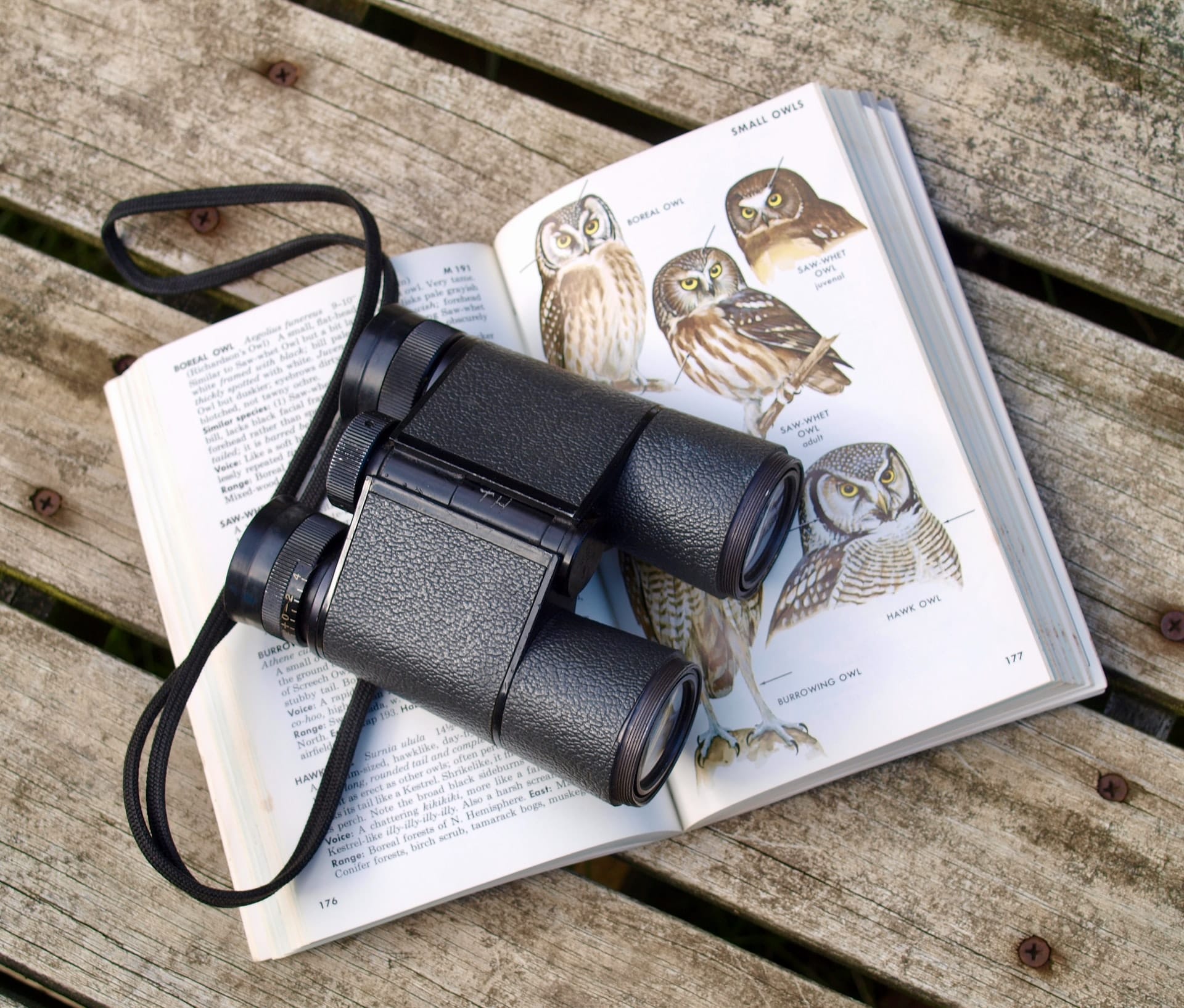
Let’s dig into the fun stuff: our review section! Here we’ll present our best binoculars options within five different price ranges.
1. Best Binoculars Under 50 Dollars
The Byakov binoculars are the cheapest on our list and are large imagers with a 42 mm-sized objective lens. The manufacturer states that they have a 12x magnification which is rather too big as this might also make the image more blurry at high zoom. The product comes with a mini tripod to counter this, which you can attach to get more stable images.
According to the manufacturer, with a wide field of view of 367 feet, you can also watch moving animals or sports action with ease. However, users state that they seem to have a narrower FOV than stated.
Another pro with these binoculars is that they have fully multi-coated lenses, which provide brighter and clearer images. Users are impressed with the clear view these binoculars give for the affordable price.
Customers also appreciate how easy these imagers are to use, and that it’s a breeze to adjust the focus. You can also attach a phone to see the image through the mobile with the accompanying phone adapter.
However, according to several customers, this adapter is difficult to use, and the phone seems to be in the way of the eyecups.
Additionally, these are reportedly lightweight binoculars, since they’re mostly made from plastic.
They also come with lens caps that stay attached to the imager through strings, and a strong but soft carrying bag.
Buyers report that the magnification of this product is less than stated and that you can’t view things at a distance. Some mention that they’re good for watching birds close to you or for casual use, but not more than that. Furthermore, Byakov doesn’t state that these binoculars are weatherproof.
Pros
- Most budget-friendly.
- Accessories such as a mini tripod, a carrying case, and lens caps.
- Wide field of view.
- Decent image quality.
- Easy to use.
- Lightweight.
Cons
- Phone adapter is challenging to work with.
- Magnification and FOV aren’t as good as stated.
- Not water- or fogproof.
2. Best Binoculars Under 100 Dollars
Jumping up one price bracket, we have the Adasion binoculars that are large-sized binoculars with 42mm lenses—but they’re still lightweight at 1.25 pounds. The 12x zoom-in is suitable for watching birds, for example, but perhaps too much for a casual user to maintain a stable image.
With fully multi-coated BAK-4 lenses, these binoculars use top-class glass in terms of anti-reflective performance. Confirming this, users state that the Adasion imagers have clear image quality, especially considering the price.
Another feature is the attached phone adapter that’s compatible with almost any smartphone, including iPhones, Samsung Galaxy models, LG, Huawei, and HTC.
However, some users felt that the phone holder was loose around the camera’s opening, which means that they have to hold the phone tightly against the mount to take good pictures with a wide field of view.
These binoculars have a FOV of 367 feet, which is pretty decent. It is also worth mentioning that these are water-resistant binoculars that you can use in light drizzle, but they can’t be submerged in water, nor can you use them in heavy rain.
Some cons of the Adasion are related to the material and construction of the binoculars that feel cheap. The center focus dial is difficult to use and is too jerky to stop at a specific point. The phone adapter is also placed awkwardly.
Pros
- Portable and light.
- Great quality glass.
- Fully multi-coated.
- Wide FOV.
- Water-resistant.
Cons
- Phone adapter fits too loose to the phone.
- Cheap construction.
- Center focus dial is jerky.
3. Best Binoculars Under 200 Dollars
Vortex is a well-renowned brand within the outdoor optics field, and they produce quality products. The Crossfire HD binoculars are no different, and these are available with 42 or 50mm objectives, which are both full size. You also have the option of either eight or ten times magnification.
This review will focus on the 12×50 model with its large lenses and significant zoom-in capabilities.
The large objective lenses capture lots of light and, paired with fully multi-coated lenses, provide clear and bright images, which customers confirm. While this product has an excellent zoom size that works well, this also compromises its FOV, which is relatively narrow at 273 feet.
Worth mentioning is that the Crossfire has roof prisms that give it a sleeker look, and the binoculars have adjustable eyecups, which makes them suitable to wear for both those with and without eyeglasses. They also have an eye relief of 15mm, which works great for those wearing standard-sized glasses.
Also included with the Crossfire are a neck strap, case, and a binocular harness, and while they don’t come with a tripod, they have a tripod screw mount.
With moisture-sealing O-rings and nitrogen in the tubes, these binoculars are also water- and fogproof.
Further adding to their durability is rubber armour that makes the surface non-slip and difficult to break.
However, what buyers complain about is that the Crossfire requires some work for a clear image and isn’t the easiest to focus, resulting in the edges of the image appearing blurry. Also, the field of view is narrow, which makes them less ideal for hunters or birdwatchers.
Pros
- Large objective provides quality images.
- 15mm eye relief works for those wearing glasses.
- Great for zooming in.
- Fog- and waterproof.
- Sleek roof prism design.
- Adjustable eyecups.
- Durable non-slip surface.
Cons
- Difficult to focus.
- Rather narrow field of view.
4. Best Binoculars Under 300 Dollars
Steiner is another popular brand in terms of outdoor imaging, and their Marine binoculars live up to the reputation. With big, 50mm objective lenses, they capture a lot of light, making them great even for low-light settings.
These binoculars have 7x magnification, which is on the lower end, but this also means that they focus well and provide clear images, rather than reduce quality by zooming in on objects far away.
Another feature adding to the clarity of the images is their Sports-Autofocus system that automatically puts everything into focus starting from 20 yards.
Users state that the Steiner Marine has excellent color correction and that the image is clear, even at the edge of the field of view. In terms of FOV, these binoculars have a 356 feet wide one which is good enough for most users.
Also worth mentioning is that these are waterproof and fog-resistant binoculars with shock-absorbing rubber armour that makes them super durable. The polycarbonate chassis can even withstand 11 G’s of impact.
Accessories included with the product are a neck strap, a carrying case, objective lens covers, and lens protection caps. Another appreciated feature among buyers is the 20mm eye relief that makes them perfect for eyeglass wearers.
The biggest con with these binoculars is that they’re big and heavy at 2.3 pounds and are likely to hurt your arms if you use them for extended periods, while birdwatching, for example. Customers also complain that the lens protectors don’t effectively protect the binoculars from dirt or scratches.
Pros
- High-performing even in low-light environments.
- Autofocus works great.
- Water- and fogproof.
- Shock-absorbing armor.
- Generous eye relief.
Cons
- Big and clumsy.
- Heavy.
- Lens protectors don’t give sufficient protection.
5. Best Binoculars Under 500 Dollars
These are the most expensive optics on our list, but also the highest-performing ones. They’re available in 10×42, 10×50, and 12×50 sizes, but the only ones within our 500 dollar price range are the 10×42 versions.
With a 42mm objective lens and 10x magnification, these are ideally sized for most users and have a decent FOV at 341 feet.
While the Viper produces rather bright images, they perform excellently in terms of image sharpness and quality. Users report that these binoculars can spot small details on objects far away as well as closer to you. They also have very little chromatic aberration which means that there’s little to no color fringing.
The only issue customers seem to have in terms of image quality with these optics is that you get glare in the image if you’re looking at shaded areas with light behind or beside you.
Buyers find that the Viper HD is a lightweight binocular option that’s remarkably compact and easy to carry, while still producing high-quality images. These use a roof prism which might be why they feel so portable.
Other features include O-ring seals and argon-purging, making the binoculars both water- and fogproof.
The Viper HD’s come with a carrying bag, a harness, and a padded neck strap that users find very comfortable. With a 17mm eye relief and adjustable eyecups, these are also good binoculars for most eyeglass wearers.
One complaint buyers have with the Viper HD’s is that the center focus wheel is stiff, making it challenging to focus finely.
Pros
- Provide very sharp images.
- Minimal color fringing.
- Light and portable.
- Sleek roof prism design.
- Fog- and waterproof.
- Great for eyeglass wearers.
Cons
- Relatively pricey.
- Glare in the image.
- Difficult to precisely adjust the center focus wheel.
Conclusion: The Best Affordable Binoculars Are…
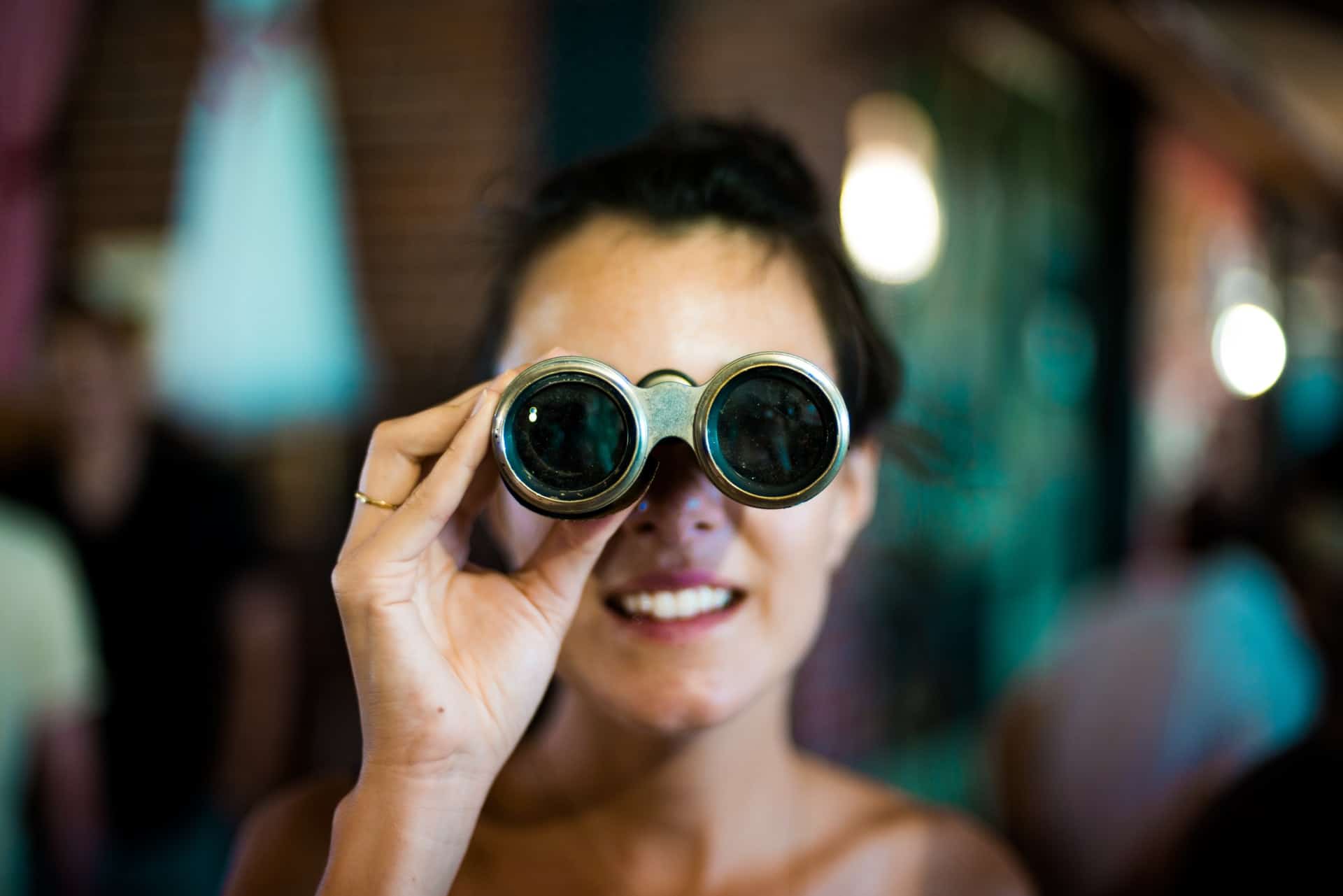
While the best-performing binoculars aren’t the most affordable, you have to decide how much you’re willing to compromise in terms of quality to get a cheap pair of imagers.
In our opinion, its best to go for the middle-ground in terms of function and price range if you’re not using them for a specific purpose.
In terms of compromising between cost and performance, our top pick are the Vortex Optics Crossfire HD. They provide excellent images, are very durable and work great for eyeglass wearers, but are way cheaper than other high-performing binoculars. Their only real con is that they don’t have the widest field of view.
If you’re looking for budget binoculars with a wide FOV, your best bet is the Adasion 12x42 Binoculars For Adults. These also have a phone adapter allowing you to take pictures of the binocular images with your mobile.
But which low cost binoculars suit your budget?






